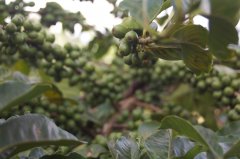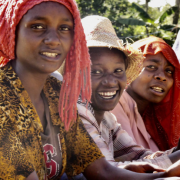Kenyan K72 double washing coffee bean flavor characteristics Kenyan coffee flavor
The clean and bright style of Kenyan coffee beans has a lot to do with his unique way of handling coffee. Today, the editor will take you to learn about the double fermentation treatment of Kenyan coffee.

Kenya's washed coffee is world-famous, and international buyers often require washing: the main producing area is to add honey treatment, sun exposure and even experimental anaerobic fermentation, but it is rare in Kenya. The reason is that the price of raw beans in Kenya is high and the production is relatively small, while there are about 700000 small coffee farmers in the country, 55% of which are directly valued by washing stations, and farmers do not know the actual treatment after the fruit is submitted.

The water washing station in Kenya attaches great importance to the cleanliness of the appearance of fermented fruit and the system of water content. Most washing methods are washed behind in the gelatinous layer of the fruit, and the process is fast, but the Kenyan washing method has two more procedures, and a clean trough is introduced again after fermentation, followed by manual brushing in the channel (this procedure is also available in Ethiopia). Some people call it double fermentation or double water washing, but in fact, the fermentation has been completed after the fruit leaves the fermentation tank for the first time, so the correct statement should be the static method after washing fermentation or the static method in water again after washing fermentation. there are also water washing stations using dry fermentation (dry fermentation without human water in the fermentation tank), and then wash the pectin layer completely after the fermentation is completed. The method of static fermentation after fermentation is commonly known as the "double fermentation method", but this name is easy to be misunderstood. This method is explained now: the coffee cherry is peeled immediately after receiving the fruit screening, and the peeled fruit still has a colloid layer and thick stickiness, and then goes into the human fermentation tank. The fermentation tank usually does not fill up with water at this stage, because the height of the water will not be determined until the fruits of different densities flow. On the other hand, some treatment plants will also recycle the water in the fermentation tank, which some people think can save time or increase the effect of fermentation (adjusted or stirred according to the water quality), which is usually completed within 12 to 24 hours. The purpose of fermentation is to decompose the components of pectin and slime, making the structure easier to remove. In the stage of storage, the fermentation liquid in the fermentation tank should be combined with the coffee fruit, and its change will bring the acidity of the apple and the tonality of the positive fruit with Kenyan characteristics, which gives the Kenyan coffee a unique flavor. Fermentation continues until most of the slime is separated from the seeds. After the fermentation, the coffee fruit will be led to clean the channel and manually stirred to help rinse the fruit and remove the loose stickiness. After the completion of this stage, low-density floats or low-density fruits will be screened out during the completion process, which is an important step to maintain the high quality and consistent flavor of Kenyan beans. Reintroduce the fruit fermented in the tank after the channel is cleaned, repeat the first step to introduce the fruit into the fermentation tank again, but this time the fermentation tank is full of water and only uses clean water (if there is recycled water, clean water will be used in the second trough). This time, it will be soaked for 12 to 24 hours (some of the treatment fields will even soak for 36 hours). Because there is little sugar or residual slime on the surface of the coffee fruit in the second process, there are too few nutrients that can be used for fermentation. the second time into the tank actually does not have the effect of fermentation (because clean water and washed shell beans have no substrate to supply nutrients for fermentation). The second soaking in water is recognized as the main reason why Kenyan coffee is cleaner and brighter. After completion, the cleaning channel is introduced again to repeat the work after the completion of the first fermentation. After the fruit is harvested by dry fermentation water washing method, the peel is removed directly by a dish peeling machine, and the peeled fruit is carved, and the dry fermentation is carried out in an anhydrous way (the method of hair deer without water in the cool trough), usually for 6 to 8 hours, water is introduced into the plant, and the shell beans are washed to remove the slime. After that, the water in the tank is drained and dry fermentation is carried out again. This is repeated several times, until the pectin layer is separated, the shell beans will be drained out of the sink and into the next stage of channel cleaning. After that, the sink with clean water will be left standing for about 24 hours. This dry fermentation method because there is no water in the horizontal, the temperature is usually higher than when there is water in the tank, the higher temperature is conducive to fermentation, but it needs to be properly controlled to avoid fermentation too fast and flavor damage. If there is no cure, please do so several times. when the routine is completed, the first guide will have a channel with a clean water surface, and the fermented shell beans will flow down with the water to the next stage of the cleaning channel (usually the cleaning channel will be designed according to the order of the topography of the treatment station and the treatment stage). Kenya's famous cleaning channel and follow-up cleaning channel, also known as manual cleaning channel, uses the height of the cleaning canal to design an interception installation at the bottom, so that the bean body has different distribution areas according to the density. The principle is that heavier shelled beans will fall to the bottom of the channel, and lighter ones or other floating objects will float on the surface. In terms of quality, the lighter shell beans above are indeed of poor quality. Workers will scrub and push hard along the channel, and they will speed up the cleaning operation with sticks or brooms. The action is to systematically stir the shelled beans up and down the channel. After the cleaning operation is completed, all washed beans with shells will be moved to a higher scaffolding for sun drying. The scaffolding will lay a net, so that the water with shell beans can be dripped, the air can be circulated, and the good air fluidity can accelerate the drying of shell beans. The drying time of these shell beans is 10-20 days, followed by the cleaning channel operation after the completion of shell bean fermentation. The raw beans that have been refined will eventually be marked with the number of raw beans, the batch code and the coding of the units in each processing stage. Among the batches, beans produced by as few as several coffee farmers and as many as hundreds of coffee farmers were selected in the same production batch on the same day, so it is difficult to trace who produced this batch, at most, coffee farmers on a certain day. This is also the reason behind the African daily batch, which is the smallest source of boutique. Bean hunters can only trace back to the proportion of the fruit sent by coffee farmers on a certain day, which cannot be compared with the manor coffee in Central America. Most African farmers only know how to plant and pick, know little about the work after harvest, and may not even drink their own coffee. When the above-mentioned shell beans are stored in the storage process until the humidity reaches the standard (10% murmur11.5%), they are sent by the cooperative to a large dry treatment plant for shelling and grading, after which they can be sold directly or sent to the auction house for direct transaction with the buyer.
Important Notice :
前街咖啡 FrontStreet Coffee has moved to new addredd:
FrontStreet Coffee Address: 315,Donghua East Road,GuangZhou
Tel:020 38364473
- Prev

Flavor and taste characteristics of historical stories of Kenyan coffee varieties SL28 and SL34 Rui Lu 11 coffee beans
Today, the editor introduces the unique Kenyan coffee varieties SL28 and SL34, both of which are cultivated from Scott Laboratory (SL). They are selected varieties of a single variety after many times of cultivation, referred to as SL28 and SL34. It should be noted that 42 tree species were selected from different producing areas in the laboratory. SI is only the prefix name of the R & D series, which does not mean that they are all the same variety.
- Next

Kenya Coffee Bean producing area | processing Plant Information and Cup Test report of Kenya Coffee small Farmers' Cooperative
Kenya's coffee growing system is complex, accounting for only a small number of independent estates in Africa, and most of the good coffee is the joint work of producers who submit the fruit on the day of production. If you want to trace the source, you can only start with a primary cooperative or a small washing station. Today, I would like to briefly introduce the four famous cooperatives in Kenya! Mwiria factory introduction farm: Mw
Related
- Detailed explanation of Jadeite planting Land in Panamanian Jadeite Manor introduction to the grading system of Jadeite competitive bidding, Red bid, Green bid and Rose Summer
- Story of Coffee planting in Brenka region of Costa Rica Stonehenge Manor anaerobic heavy honey treatment of flavor mouth
- What's on the barrel of Blue Mountain Coffee beans?
- Can American coffee also pull flowers? How to use hot American style to pull out a good-looking pattern?
- Can you make a cold extract with coffee beans? What is the right proportion for cold-extracted coffee formula?
- Indonesian PWN Gold Mandrine Coffee Origin Features Flavor How to Chong? Mandolin coffee is American.
- A brief introduction to the flavor characteristics of Brazilian yellow bourbon coffee beans
- What is the effect of different water quality on the flavor of cold-extracted coffee? What kind of water is best for brewing coffee?
- Why do you think of Rose Summer whenever you mention Panamanian coffee?
- Introduction to the characteristics of authentic blue mountain coffee bean producing areas? What is the CIB Coffee Authority in Jamaica?

